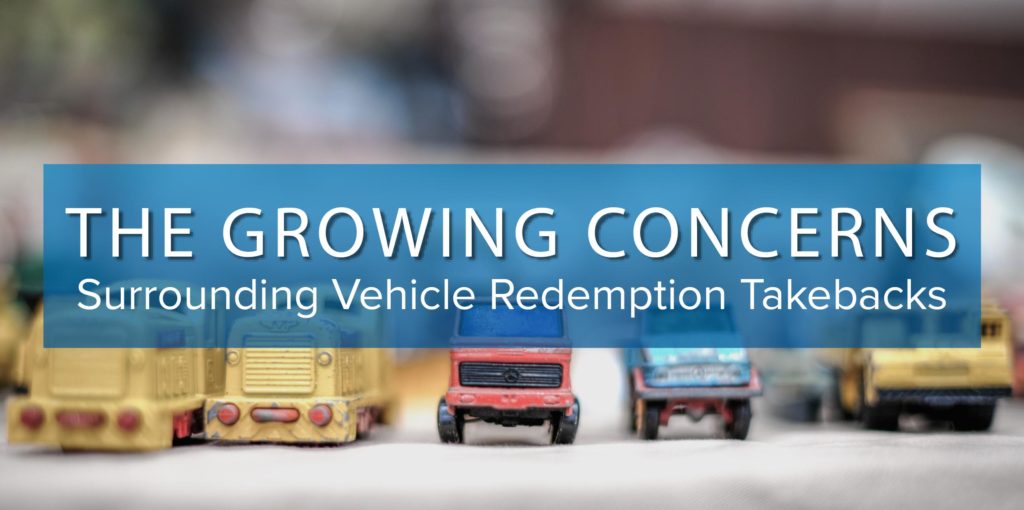
The Growing Concern Surrounding Redemption Takebacks
As American Recovery Association (ARA) Executive Director Les McCook summarized the situation of takebacks, “it’s a can of worms.”
“For many years, if we picked up a car in Waco, Texas, they moved it to an auto auction in Dallas and people had to go to Dallas to get their car back. It was no big deal. But nowadays, that’s not happening,” McCook said.
In today’s environment, state laws are in place where redemption must be completed in the jurisdiction where the repossession happened, not at an auto auction that might be many miles elsewhere.
For any readers who are not be familiar with the term, “takebacks” refers to vehicles already repossessed and have already been transported to an auction for remarketing have to be returned to the repossession agent so the consumer can complete the redemption process.
If not handled properly, the process of takebacks can be extremely challenging and pose substantial risk to the repossession agent, forwarder, and lien holder. This article will provide deeper insight into the issue as well as help lenders understand the agent’s perspective and where the problems can occur.
Agent Perspective of Problem
The biggest issue takebacks create is the loss of chain of possession and the resulting claims of damage and/or wrongdoing. Many insurance carriers provide coverage for valid repossessions but not for transportation of the vehicle from an auction to the agent’s lot. For Repossession agents, this would open them to additional exposure if a vehicle sustains any damage during its journey to the auction, its stay at a wholesale facility, or while it’s transported back to the agent’s lot. As a result, many agents now require a hold harmless for damage claims as well as compensation for the additional work that goes into handling new condition reports, pictures, and inspections which are often required by insurance carriers.
McCook acknowledged the lender perspective with regard to takebacks.
“It’s all under good auspices. The lender is trying to satisfy and help their consumer,” McCook said. “But the problem is if you reopen the case, where we’re retaking possession of an automobile, where that chain of custody has been broken, we’ve now resubmitted ourselves to legal liability again.” Although it poses many risks, takeback volume is on the rise as more lenders are resorting to this method of redemption. Many lenders have taken a clear stance on no longer wanting to have the debtor redeem the vehicle at the auction. In fact, this particular volume segment tripled in scale during the past year.
Summary
The take back issue does pose legitimate issues/risks to repossession agencies. The ARA, in collaboration with the Harding Brooks Insurance Agency, has provided guidance on the documentation needed from the lender for insurance coverage to apply when a takeback occurs. Those details include:
- A written statement that the assignment is open and active
- A condition report must be completed upon return of the repossessed vehicle to your lot
- The hold harmless you receive should be signed by all parties
- The hold harmless should read “Lender” agrees to defend, indemnify, and hold harmless “Recovery Company” from any claims, legal expenses or losses of any type incurred from taking back a vehicle from auction
Takeback volume could continue to rise this year. Auto defaults climbed for five consecutive months from June through November, according to metrics compiled as a part of the S&P/Experian Consumer Credit Default Indices.
And Experian pegged the overall third quarter 30-day delinquency rate at 1.51% and the 60-day delinquency rate at 0.49%. Those readings might seem low since finance companies made accommodations to millions of customers who were impacted financially by the pandemic.
To summarize again, McCook calls takebacks, “a big issue right now.”
Download a PDF Copy
Get a free copy of the above article to share with your colleagues. Enter your information below and receive a free PDF.
